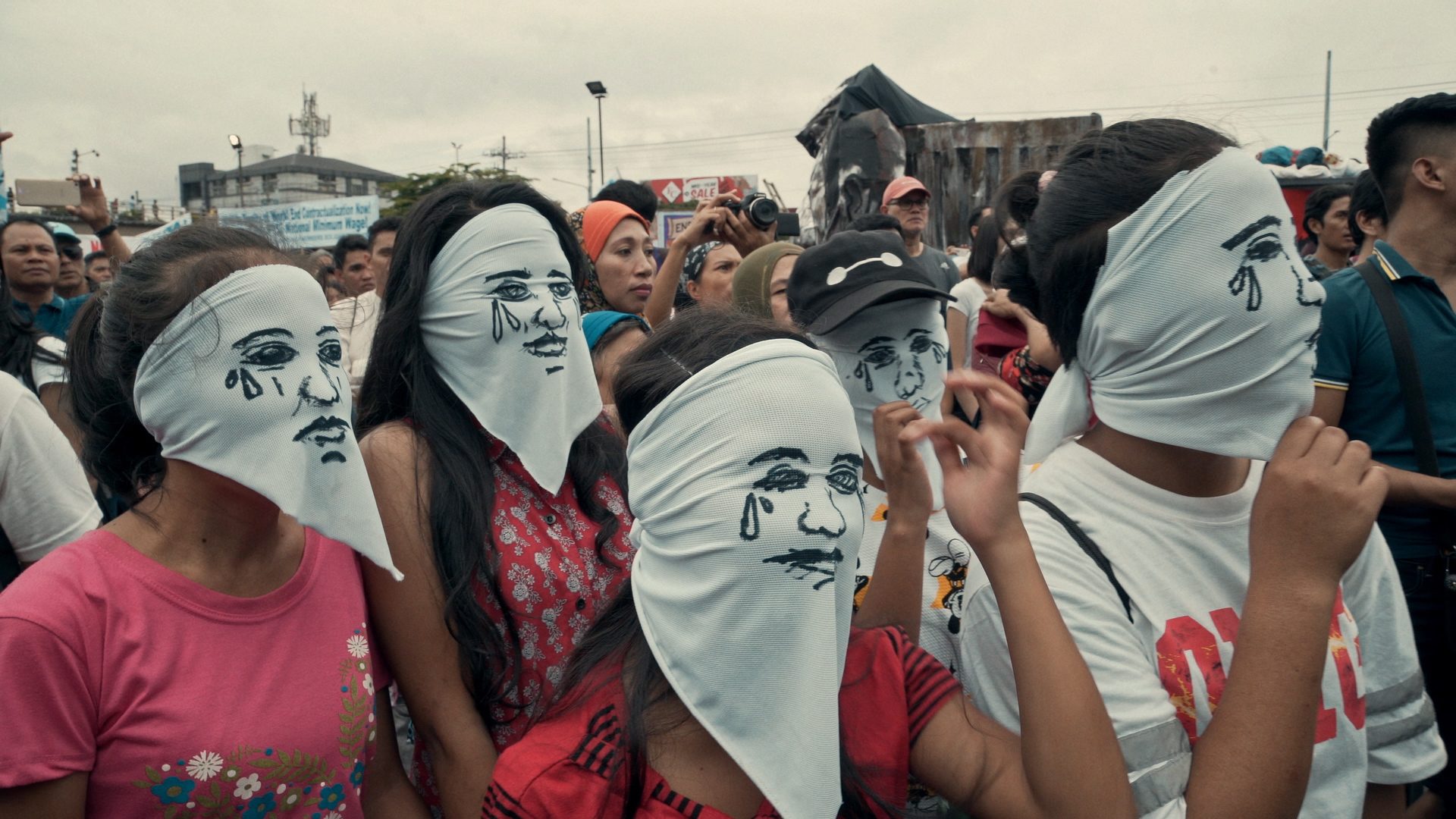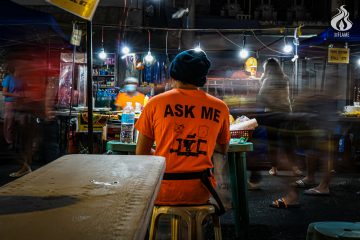By MHERYLL GIFFEN L. ALFORTE

AS NIGHTTIME comes, old wives’ tales and superstitions about malevolent shape-shifting creatures come to mind. Children whisper fearfully and flee into the safety of their homes out of fear for these shadowy beings haunting the street. But as they grow older, it becomes apparent that these monsters do not take the shape of gnarly figures. Rather, monsters are human and they take the form of a power-hungry tyrant and his vicious trigger-happy minions.
Directed by Alyx Ayn Arumpac, Aswang is a documentary film that bagged the International Film Critics’ FIPRECSI award in Amsterdam in 2019. It chronicles the first two years of the aggressive and controversial “war on drugs” executed by President Duterte, exposing how lives have been lost and casualties have been declared since the onset of the brutal campaign.
Aswang takes its audience directly into the bleak reality of the Metro Manila slums by opening with a shot of pulsating red and blue police lights and by showing actual crime scenes that tell the story of a ghastly aftermath — faces of cold corpses planted on sidewalks, drying blood on asphalt, and bereaved family members helplessly crying for justice.
The innocence of the youth living in the Manila slums is highlighted, with Arumpac citing a familiar narrative for the film’s prelude; the death of 17-year-old Kian Delos Santos, a teenager accused of being a drug-user who was murdered by cops.
From there on, the spotlight falls on Kian’s younger friend, Jomari, through the exposition of his painful and hard-hitting story. From a young age, Jomari is already forced into a cold yet undeserved existence that begins with living life in the streets, having a mother in prison, and losing a friend due to the brutality of authority figures. One such scene that captures his harsh reality is when he and his similarly-aged peers are making lighthearted jokes about real incidents of police brutality. A damning realization settles upon knowing that these children are up-close witnesses to tokhang operations, and at the same time, are the most familiar with the grief that comes from losing a loved one.
Halfway into the film, Jomari unexpectedly disappears, creating a feeling of dread among viewers that is further strengthened by a foreboding tone about the next outcome. Arumpac does a commendable job of manipulating the emotions of its audience as it keeps them on their toes until the end of the film.
Another inhumane incident of the drug war occurs in a police station in Manila; in a dark and secret jail hidden behind a cabinet. In this narrow and putrid cell, twelve detainees are being held illegally. It is then revealed that these prisoners have been subject to dehumanizing torture, with their families being demanded unreasonable ransoms. For them, hope fades just as quickly as it appears, for even the human rights officials fail to rescue them in the end.
According to the film, the death toll of Oplan Tokhang reached at least a thousand every month, with a staggering total of more than thirty-thousand casualties at one point, resulting in the ironical booming of small funeral services. With aloof eyes, a funeral parlor owner makes a chilling statement how they expectantly await for new corpses on their morgue beds every time he hears of another murder in a neighboring barrio. This only highlights the disturbing fact of how these people have become almost desensitized to decay with each passing corpse under this regime.
Various narratives and perspectives are added in to further prove the point of how the impoverished and marginalized are treated as enemies of the state. Instead of investigating and apprehending big-time drug lords, only the small-fry poor victims bear the brunt of these senseless killings.
Through the lens of a camera, these gritty events are captured in the shanty-towns of Manila through nighttime shots and the addition of a murky and dystopian tone contrasted by stark neon colors that look out of place against the dim backdrop.
Overall, Aswang paints a chilling picture of how the cruel regime will continue to oppress, harass, and degrade the poor as long as power-hungry monsters are hailed in power. It aims to not only inform the viewers about the political atrocities plaguing the country but also enrage them to make a stand and fight for a change. It is a reminder that monsters will never be slayed if the people remain cowering in fear.
The fight is not over as long as there is resistance. F



